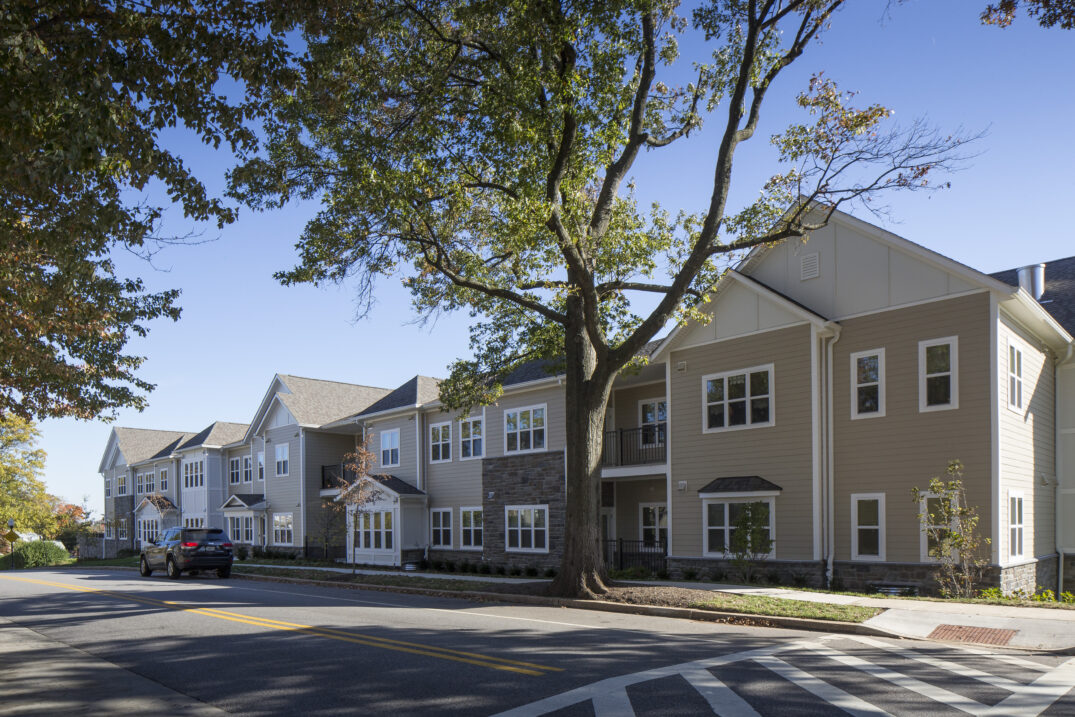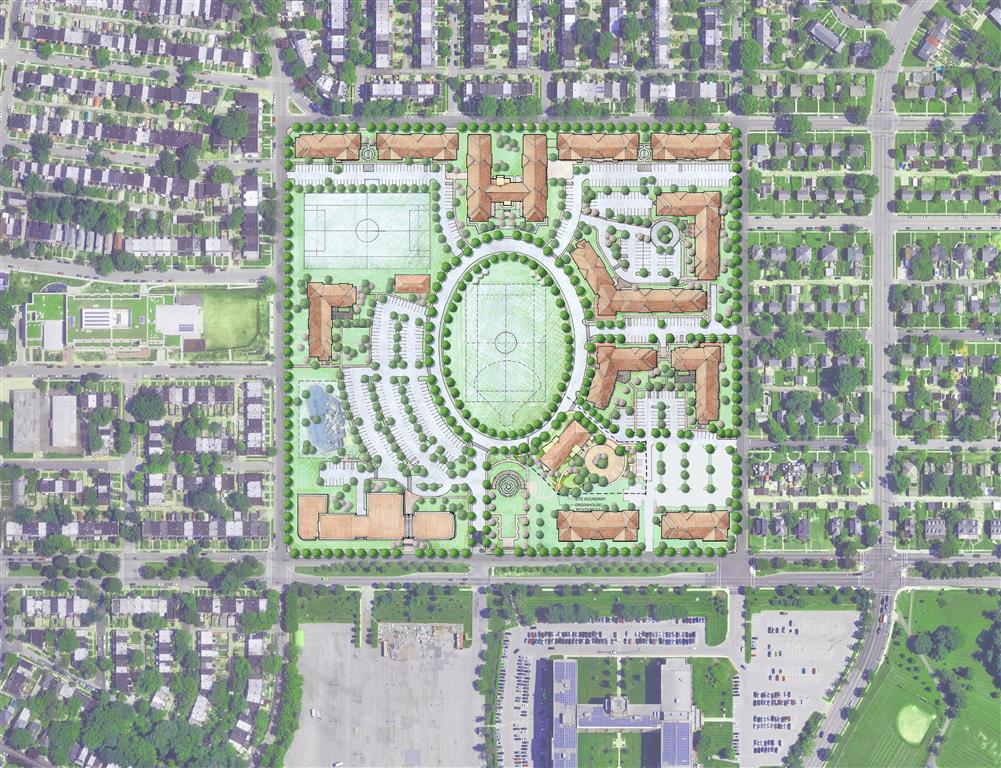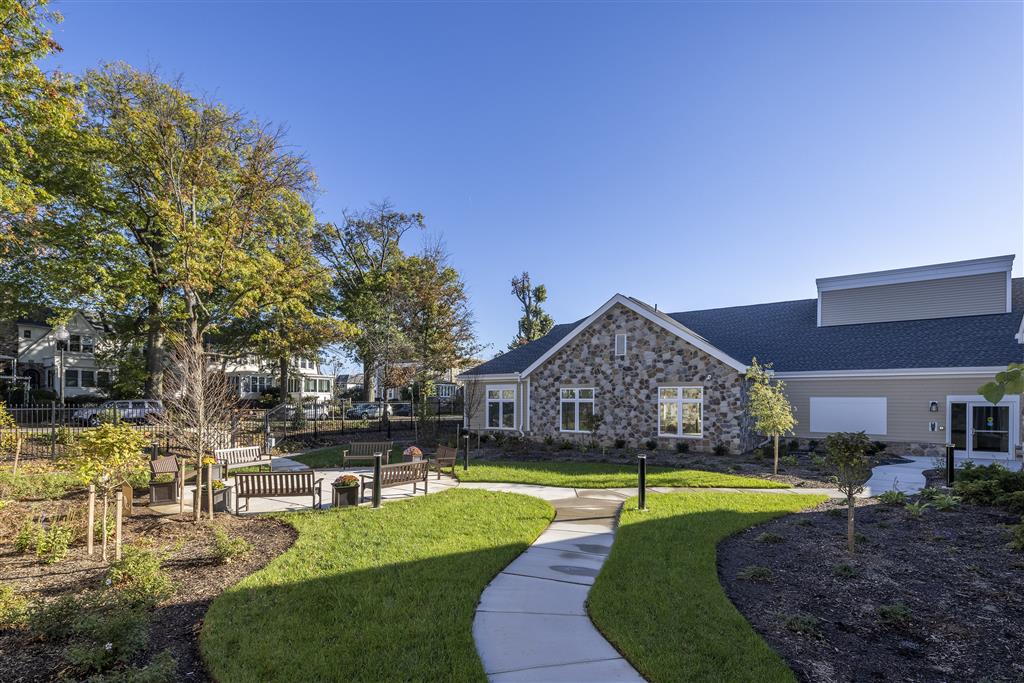Baltimore’s Stadium Place is a masterclass in willpower and community

Thirty years ago, Reverend John R. “Jack” Sharp spotted an issue among the parishioners of Baltimore’s Govans Presbyterian Church.
“To this day, there are a lot of seniors who only live on social security, which is not a lot of money,” said Magda Westerhout, principal at Moseley Architects. “Jack had seen a lot of his middle-class parishioners moving to private and often expensive retirement communities. Others were often stuck in poor living conditions.”
Sharp wasn’t known for ignoring a problem in his community. He was the founding president of Govans Ecumenical Development Corporation (GEDCO), a nonprofit organization that was created to address the need for affordable, supportive living for economically challenged, elderly congregants. GEDCO began as Govans Ecumenical Homes in 1984, eventually becoming a development corporation.
“There was a need for older adults to live in safe, decent, affordable housing, but they weren’t getting that,” said Nichole Battle, current CEO of GEDCO. “You had older adults who couldn’t afford anything other than public housing that was managed by the housing authority of Baltimore City.”
Meanwhile, nearby Memorial Stadium, the former home of the Baltimore Orioles, had reached the end of its serviceable life and was slated for demolition. The city was actively soliciting proposals for redevelopment. To Sharp and his colleagues at GEDCO, the answer was obvious. From the cheap seats to corporate suites, everyone enjoyed the same baseball games when the legendary Cal Ripken Jr. played at Memorial Stadium. Why couldn’t the former home of the Orioles become a thriving mix of affordable and market-rate housing for seniors?
By all measures, the idea was lofty—like hitting a grand slam in the bottom of the ninth. But Sharp pursued the idea the way he approached anything: with faith and confidence.
Architects Join the Effort
In 1998, GEDCO had linked up with Marks Thomas, a Baltimore-based architecture firm. If he could convince the city of his idea, he knew the firm could draft a plan to accomplish his vision. (In 2017, Marks Thomas merged with Moseley Architects.)
“Jack was very inspirational and persuasive. He felt there was a real need for affordable senior housing in the city, and thought this would be the perfect site,” Westerhout said. “In the process, he managed to convince everyone, which was truly amazing.”
“When the site was vacated, there were several people who went after it. And this visionary, nonprofit organization was not expected to win,” Westerhout said.
When GEDCO was awarded the master plan in 2000, many were surprised by the David-versus-Goliath victory.
“They were a very small organization—grassroots, with food pantries and a couple of shelters for people experiencing homelessness. And yet they took on this giant project and created such a wonderful community. I think it’s a good takeaway, that you don’t need giant developers and that small, grassroots organizations can make a difference,” said Faith Hawks, principal at Moseley Architects and the designer of the on-site hospice facility Gilchrist Center.
An Enduring Idea
With the help of Moseley Architects, GEDCO followed through on a plan to level and remove Memorial Stadium’s approximately 10,000 cubic yards of concrete, replacing it with a mixed-use, urban infill development that blends affordable and market-rate housing for seniors, bringing the same quality of life to all residents, just as Sharp envisioned.
Stadium Place’s design reflects its context in a historic residential neighborhood that consists of mostly row houses. The proportions of windows and entries as well as the use of materials and color echo the surroundings homes. Gable roofs, brick and stone, windowed bays, painted trim, and porch entries provide a sense of congruity between the contemporary and the historic buildings.
The new buildings are oriented towards an outdoor activity green at the center of Stadium Place, where the old Memorial Stadium landmark once stood. The shared amenity is framed by the building facades and entries. Large windows and screened porches form a threshold to transition from public to private space.

Stadium Place is not only a thriving community for seniors, but a gathering point for community activities and people of all ages. Unlike most senior communities, the site was master planned with destinations and large, open spaces to elicit pedestrian traffic.
“You can introduce something like this into a single-family, residential area, and it becomes an essential aspect of the community,” Hawks said. “It’s so counter to the senior community concept that we’re used to seeing out in the suburbs. I see so many people of different ages walking, jogging and enjoying the amenities. I really think it’s become an amenity for the for the entire area.”

In addition to senior housing, Stadium Place includes memory care and nursing facilities, medical offices, community-facing retail establishments, and a public YMCA. Hospice services are housed alongside a youth sports field, sponsored by The Ripken Foundation and the Sherman Center for Early Learning in Urban Communities.
“It’s terrific for the senior residents, because they can look out the window and watch all of the kids playing,” Hawks said. “When they were awarded the master plan, it followed this dream for a continuum of care—everything from seniors who want independent living, to someone who needs nursing care, or hospice. But then there are also youth programs and a kid’s daycare. It’s based around the idea that all different ages can be on the same site, interacting together.”
Inclusivity by Design
By all standards, Stadium Place is a concept that was—and in many ways still is—ahead of its time.
“I continue to see projects where market-rate and affordable housing are still segregated,” Hawks said. “It makes me realize how advanced GEDCO was from the beginning, putting this together. It really makes for a successful community.”
The same principle envisioned by GEDCO for blending market-rate with affordable housing applies throughout. Early childhood development centers include a mix of Head Start and at-cost students, as do the YMCA’s onsite programs.
“If you go to summer camp, you can’t tell whether a child is there on a scholarship, or if their parents are paying tuition,” Westerhout said.
“We have some amazing innovators leading the organization who just believed and didn’t take no for an answer, nor did they think that this was above them, or too complicated for them. It just appeared to be the right thing to do,” Battle said.
When Marks Thomas co-founder Paul Marks retired, Westerhout became the managing principal of Stadium Place. Maryland Affordable Housing Coalition honored her as Person of the Year in 2017, in part for her work on Stadium Place. Today, she is preparing to kickoff Elkader Way, which will be the 10th building designed by Moseley Architects on the site.
“I love the fact that we have been working on it for so long and that it has had such a positive impact on the lives of the people who live there,” Westerhout said. “It’s really a sense of purpose and community.”